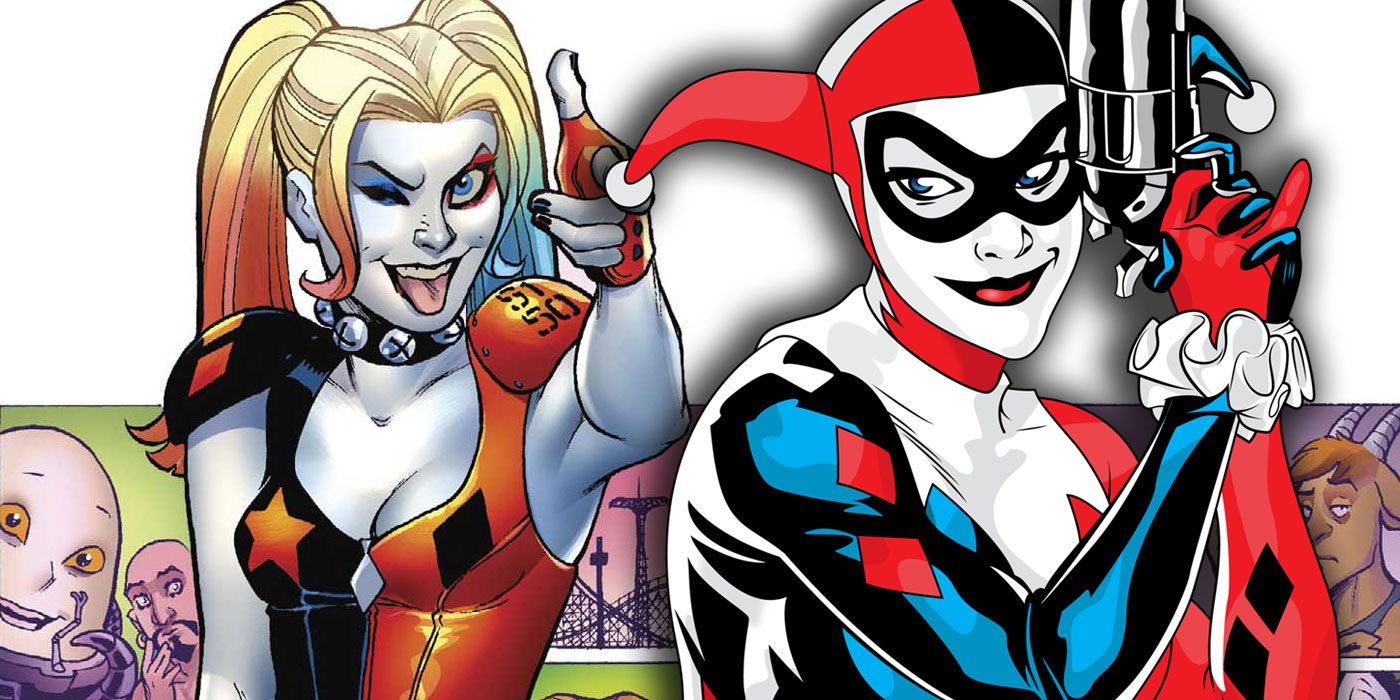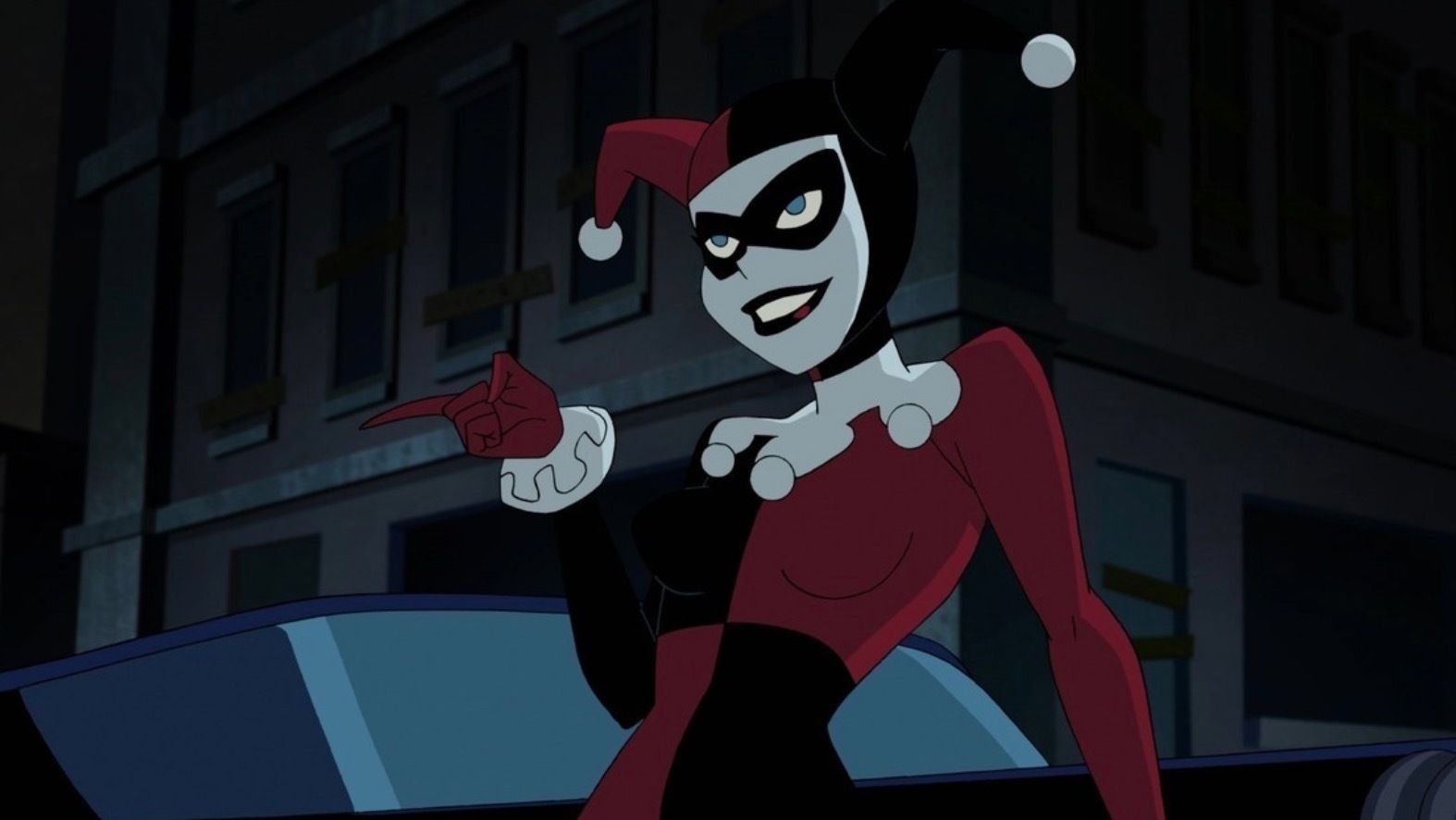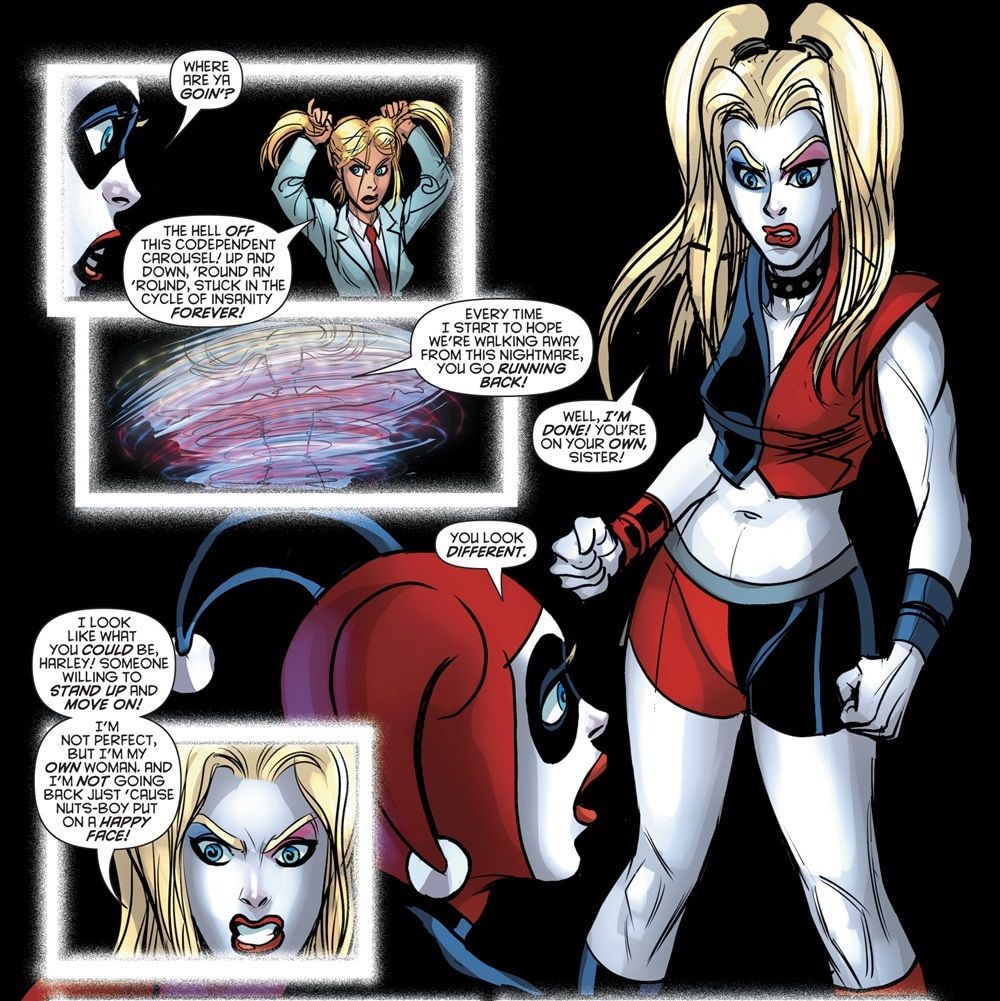WARNING: This article contains spoilers for Harley Loves Joker #2 by Paul Dini and Bret Blevins, in stores now.
Harley Loves Joker is a two-parter comic miniseries that essentially reads like a lost episode of Batman: The Animated Series. All of the elements are there, from Bret Blevins' adopting a Timmverse-style approach tot he art, to Joker's trademark purple suit, hat, orange shirt and green bow tie. Penned by Paul Dini, who co-created the television series with Bruce Timm, the comic tells a fun tale of the Joker and Harley Quinn going up against Harley's new rival, the Grison.
RELATED: Harley Quinn’s Best Friends Finally Get An Origin Story
But even though it features a silly, weasel-based villain, the Jokermobile, fake British accents and the Wonderland Gang extorting Harley for rent money, the miniseries does manage to find a bit of time to be more serious. In fact, Harley Loves Joker #2 dives into the head of Harleen Quinzel, and shows us that there is more to her than her association to the her puddin', the Joker. What's more, Dini, who co-created Harley, gives an in-story explanation for her change in costumes, from her original, classic court jester outfit the her more widely recognized modern look.
When Harley Quinn was created in 1992 as the Joker's girlfriend and partner-in-crime, she appeared in what would become her iconic red-and-black court jester outfit. It's a look and a role that she held for almost two decades, until she was given a new, more modern -- and more revealing -- outfit as part of DC's New 52 relaunch in 2011, a change that also saw Harley become a member of the Suicide Squad. After that, Harley's costume would continue to evolve, though it has maintained its general aesthetic. But as drastic as it was, her costume change was never really explained.
Now, Dini cuts to the bone of the costume change, and it turns out there's actually a meaning behind it. In Harley Loves Joker, Harley dozes off into her mind palace from time-to-time, where she sees herself talking with Dr. Harleen Quinzel, her pre-villain persona. Psychiatrist Harleen quizzes Harley about her tumultuous "relationship" with the Joker, hoping to make Harley see her relationship isn't healthy, that she should leave him.
And it almost works.
That is, until Harley changes her mind and, once again, decides to return to Mistah J. Then, in the mind palace, Harleen loses it. She says that she has enough of Harley's never-ending infatuation with the Joker, and the endless cycle of abuse and manipulation. While she talks, Harleen ditches her white doctor coat and glasses. She adjusts her hair and changes outfits into something that more akin to the modern interpretation of her costume -- not specifically, just the general idea of it. "You look different," Harley remarks. "I look like what you could be, Harley" Harleen answers. "Someone willing to stand up and move on. I'm not perfect, but I'm my own woman."
Though it's not canon in DC's Rebirth continuity, the explanation is perfect. Harley didn't just change costumes to look different -- she did so to visually represent that fact that she's moved past the Joker. Harley Quinn is no longer defined by her association with the Clown Prince of Crime, and her modern look is a reflection of that. The classic, court jester-looking Harley will always be the Joker's partner, his "girlfriend" and his favorite punching bag. Modern Harley, however, is her own woman, and she isn't defined by the person she loves she loves.
KEEP READING: Harley Quinn Names Humphries & Timms as New Creative Team



